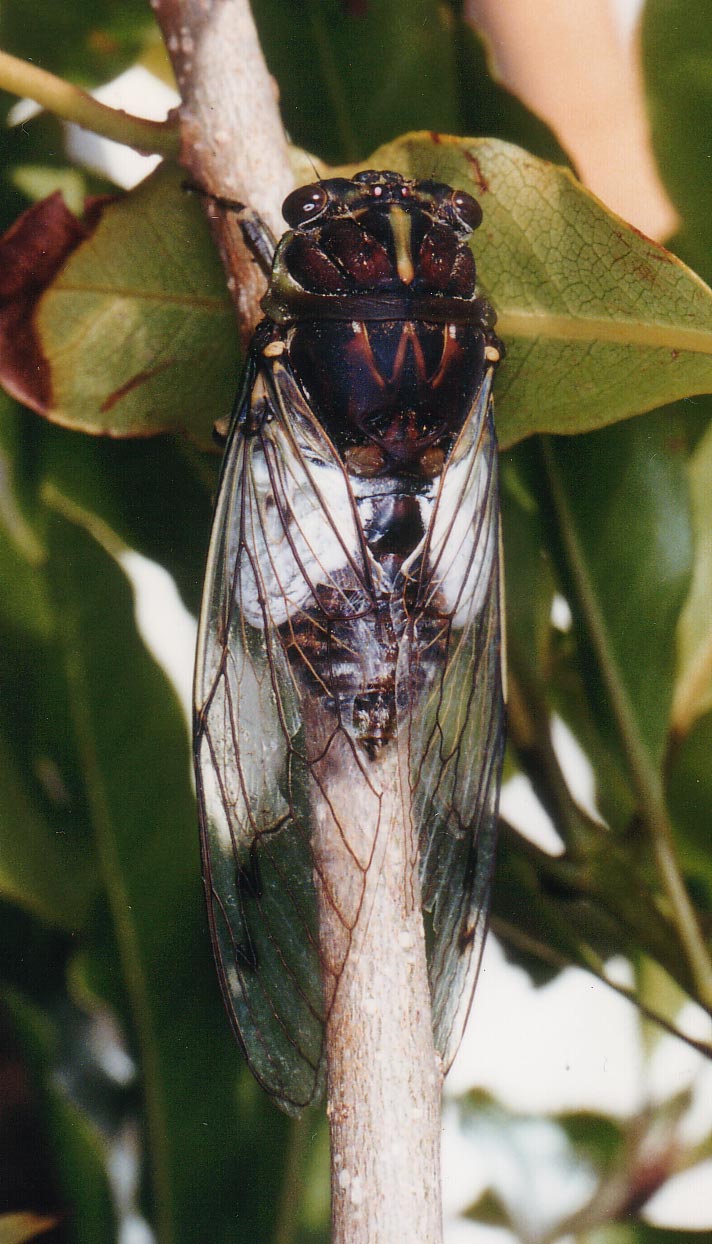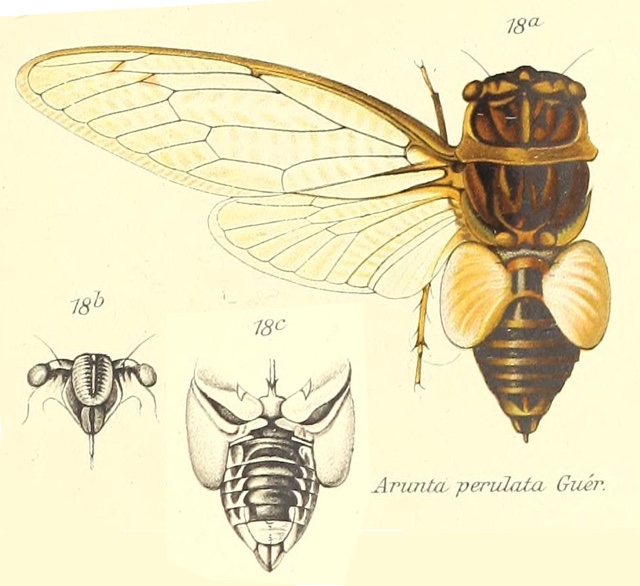Arunta perulata (Guérin-Méneville, 1831). Found in Australia. Known as a White Drummer. Like other members of the tribe Thophini, like Thopha colorata (Orange Drummer) and Thopha saccata (Double Drummer), they have massive sac-like tymbal covers, which is why they’re called drummers.
Scientific classification:
Family: Cicadidae
Subfamily: Cicadinae
Tribe: Thophini
Genus: Arunta
Species: Arunta perulata (Guérin-Méneville, 1831)

Photo by David Emery.

Arunta genus description by W. L. Distant:
Characters. — Head transverse, moderately truncate in front of eyes, between eyes much narrower than base of mesonotum ; rostrum reaching the posterior coxae; pronotum moderate broad, its breadth considerably less than length of both pro- and mesonotum (including the basal cruciform elevation); tympana very largely developed and sac-like, their apices obliquely extending beyond the lateral margins of the abdomen and to about half its length; opercula very small, not extending to base of metasternum, placed wide apart, and with their apical margins convex; anterior femora incrassated and spined ; posterior tibiae with a few lateral fine spines; tegmina and wings talc-like, tegmina with eight apical areas.
References:
- The illustration and genus description comes from the journal Genera Insectorum, and a specific article from 1913 by W. L. Distant titled Homoptera. Fam. Cicadidae, Subfam, Cicadinae. Read it on the Biodiversity Heritage Library website.
- Current species name verified using Allen Sanborn’s Catalogue of the Cicadoidea (Hemiptera: Auchenorrhyncha).